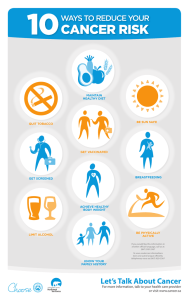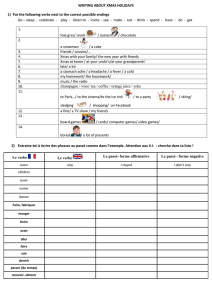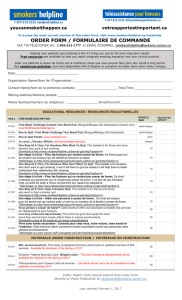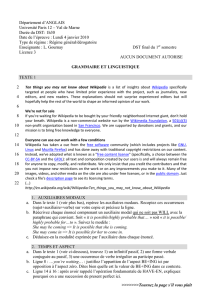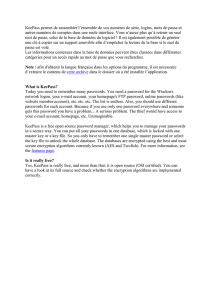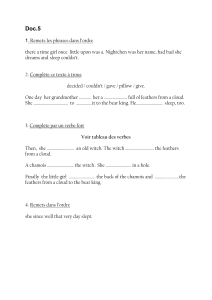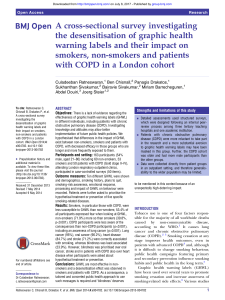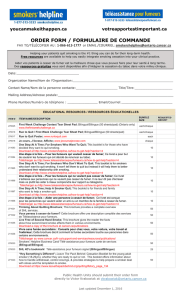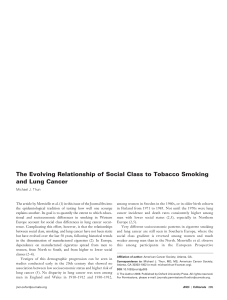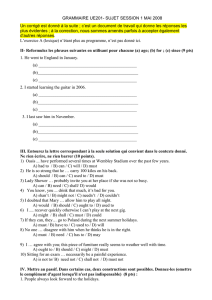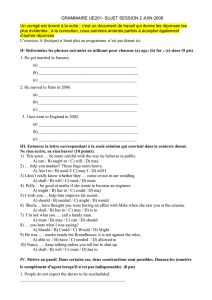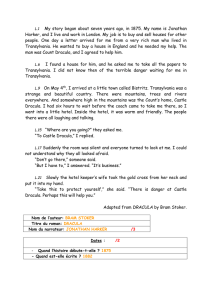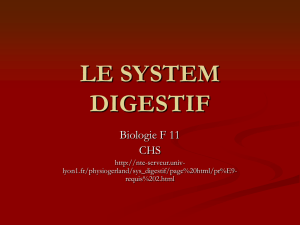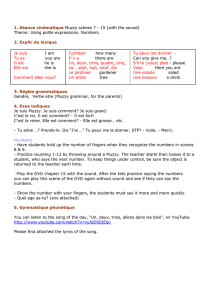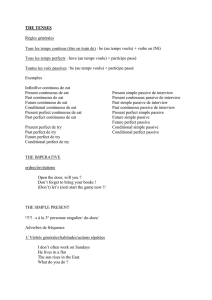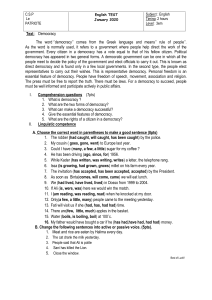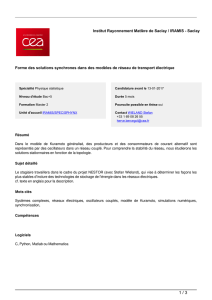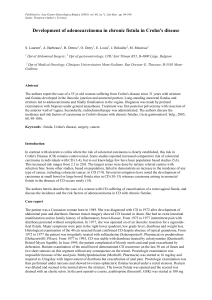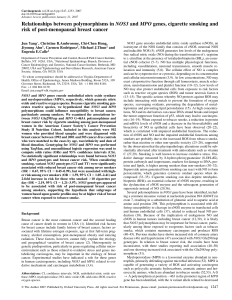Tabac et maladies inflammatoires de l`intestin
publicité
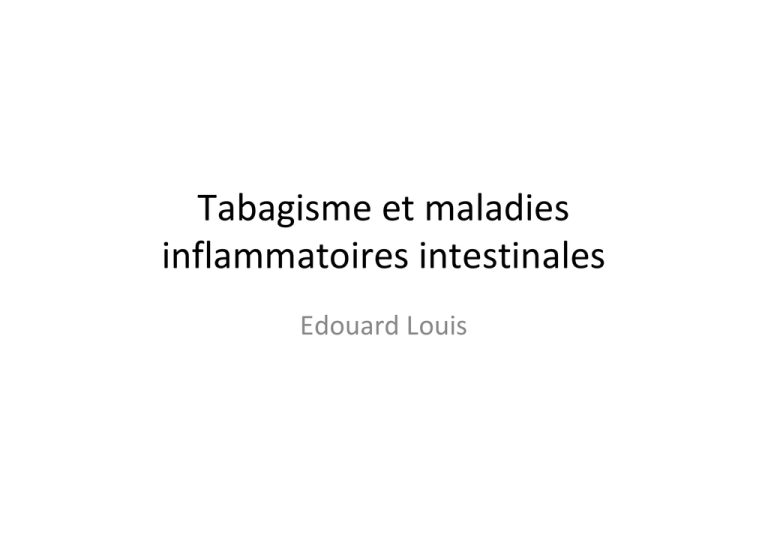
Tabagisme et maladies inflammatoires intestinales Edouard Louis Increasing incidence of IBD Différentes facettes des MICI Cancer colo‐rectal Sténoses intestinales Abcès et fistules Mesalazine Immunosuppresseurs Corticoïdes Antibiotiques Anti‐TNF Fractures sur ostéoporose Bactéries‐virus‐flore Germes spécifiques ? Rupture de tolérance ? Déficit de défense primaire non spécifique? Variations génétiques majeures détectées par GWAs dans les MICI Chr Gène Fonction CD UC 1p31 IL‐23 receptor Immune inflammatory response + + 5q33 IL‐12b (p40) Immune inflammatory response + + 9p24 JAK2 Signaling molecules + + 17q21 STAT3 Transcription factor + + 18p11 PTPN2 T cell tyrosine phosphatase + ‐ 9q32 TNFS15 Immune inflammatory response + ‐ 6q27 CCR6 Chemokine receptor + ‐ 3p21 MST1 Macrophage chemotaxis + ‐ 2q37 5q33 ATG16L1 IRGM + + ‐ ‐ 16q12 NOD2/CARD15 Bacterial recognition + ‐ 20q13 TNFRSF6B Inflammatory response, apoptosis + + 12q12 PSMG1 PTGER4 MUC19 1q32 IL‐10 21q22 5p13 Autophagosome pathway Autophagosome pathway Proteasome‐related protein + + Barrier function, immunoregulation + ‐ Epithelial integrity ‐ + Immunoregulation ‐ + Tabagisme Augmente le risque de MC Augmente l ’agressivité de MC Inverse dans RCUH Mécanisme ? Mucus, flore, IgA secrétoires, vascularisation Probability of flare‐up Probability of flare‐up (%) 100 21 60 14 40 35 17 20 0 Probability of steroid course (%) 6 p <0.001 80 37 0 12 24 48 Months after inclusion Probability of steroid course 100 80 40 28 20 38 12 80 p <0.001 60 15 40 36 20 0 40 0 12 42 24 21 18 36 Quitters Continuing smokers Non‐smokers 20 19 39 0 Probability of starting or changed IS therapy 100 Months after inclusion 10 p <0.001 60 0 36 Probability of starting or changed immuno‐ suppressive therapy (%) Impact of smoking cessation in CD Optimising disease control 24 36 Months after inclusion 48 Cosnes J, et al Gastroenterol 2001; 120:1093 48 Effet du tabagisme sur les MICI Mécanisme de l’impact du tabac sur les MICI Choix Cornélien dans la RCUH • EM née en 1955 • RCUH sous forme de colite gauche depuis 1992 (arrêt du tabagisme en 1990) • Traitement par mesalazine efficace et rares cures de corticoïdes jusqu’en 2003 • Développement d’une corticodépendance requérant un traitement par azathioprine • Efficacité transitoire avec épargne cortisonique jusqu’en 2005, puis échappement thérapeutique • Options: colectomie totale vs anti‐TNF (encore expérimental à l’époque) To smoke or not to smoke… • Reprise du tabagisme (10 cigarettes/j) par la patiente et entrée en rémission maintenue par la mesalazine seule • Octobre 2011: apparition d’un cancer pulmonaire Arrêt du tabac dans la maladie de Crohn: un objectif difficile • 474 consecutive smokers with Crohn's disease – Repeated counseling to stop smoking, with easy access to a smoking cessation program – Patients who stopped smoking for more than 1 year (quitters) were included in a prospective follow‐up study, which compared disease course and therapeutic needs with 2 control groups, continuing smokers and nonsmokers • There were 59 quitters (12%) – Predictors of quitting were the physician, previous intestinal surgery, high socioeconomic status, and in women, oral contraceptive use. – During a median follow‐up of 29 months (1‐54 months), the risk of flare‐up in quitters did not differ from that in nonsmokers and was less than in continuing smokers (P < 0.001). Gastroenterology. 2001 Apr;120(5):1093‐9. Smoking cessation and the course of Crohn's disease: an intervention study. Cosnes J, Beaugerie L, Carbonnel F, Gendre JP. L’arrêt total du tabagisme est nécessaire • 2795 consecutive patients during the period 1995‐2007 – Patients were classified as nonsmokers (n = 1420), light smokers (1‐10 cigarettes/day; n = 385), heavy smokers (>10 cigarettes/day; n = 638), and intermittent smokers (change in smoking habits; n = 352). – Course of the disease expressed as patient‐years while smoking were compared to patient‐years without smoking. • The percentage of years with active disease was 37% in nonsmokers versus 46% in light smokers (P < 0.001; adjusted hazard ratio 1.30 [1.19‐1.43]) and 48% in heavy smokers (P < 0.001; adjusted hazard ratio 1.68 [1.57‐1.81]), despite an increased use of immunosuppressants in smokers. • Hospitalization rates were also increased in both groups of smokers, with 12% in nonsmokers versus 15% in both groups of smokers (P < 0.001 for both comparisons). Inflamm Bowel Dis. 2009 May;15(5):734‐41. Effects of light smoking consumption on the clinical course of Crohn's disease. Seksik P, Nion‐Larmurier I, Sokol H, Beaugerie L, Cosnes J. Improving patients’ empowerment by motivational interviewing Motivational interviewing is a patient‐centered, directive method for enhancing intrinsic motivation to change by exploring and resolving ambivalence William R. Miller et Stephen Rollnick No Change Change What are the main differences between conventional and motivational interviewing? Motivational Conventional • • • • • • Argues that the patient has a problem and needs to change Offers direct advice or prescribes solutions to the problem without the patient’s permission or without actively encouraging the patient to make his/her own choices Uses an authoritative/expert stance, leaving the patient in a passive role Does most of the talking, or functions as a unidirectional information‐delivery system Imposes a diagnostic label Behaves in a punitive or coercive manner • • • • • Seeking to understand the patient’s frame of reference, particularly through reflective listening Expressing acceptance and affirmation Eliciting and selectively reinforcing the patient’s own self‐motivational statements, expressions of problem recognition, concerns, desire and intention to change, and ability to change Monitoring the patient’s degree of readiness to change, and ensuring that resistance is not generated by jumping ahead of the patient Affirming the patient’s freedom of choice and self‐direction Conclusions • Le tabagisme est le facteur environnemental dont l’impact sur les MICI est le mieux documenté • L’impact différent sur le Crohn et la RCUH est intriguant et incomplètement compris • Le clinicien est parfois confronté à un choix cornélien dans la RCUH • Plus d’énergie, de moyens et de motivation devraient être mis pour l’arrêt du tabagisme dans le Crohn
